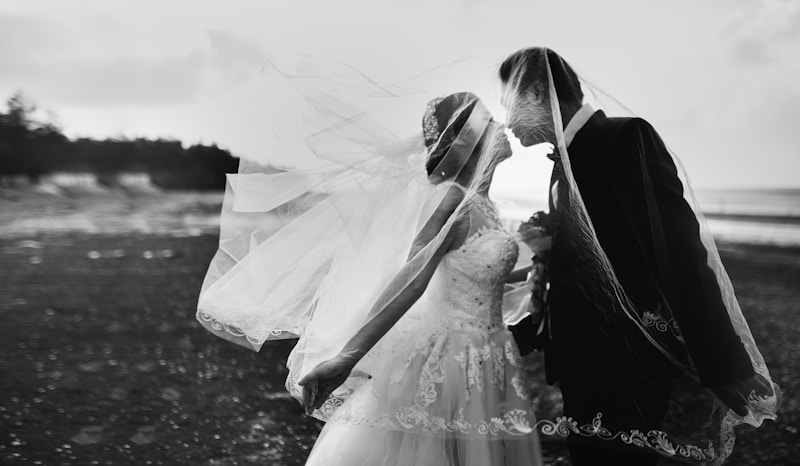Mastering Budgeting for a Bespoke Wedding Dress: Your Ultimate Guide
Mastering Budgeting for a Bespoke Wedding Dress: Your Ultimate Guide
Planning a wedding is no small feat, and choosing the perfect dress can be one of the most exciting yet daunting tasks on your to-do list. In this guide, we will delve into the details of budgeting for a bespoke wedding dress, offering insights, tips, and creative solutions to help you get the dress of your dreams without breaking the bank. Whether you’re in New York, London, or Sydney, this article provides practical advice that applies to any wedding budget.
Understanding Bespoke Wedding Dresses
What exactly is a bespoke wedding dress? A bespoke gown is custom-made specifically for you, reflecting your style, shape, and preferences. Unlike off-the-rack dresses, bespoke options offer unique fabrics, tailoring, and design choices that might cost more due to the level of craftsmanship. Generally, they start around $2,000 and can easily exceed $10,000 or more, depending on various factors.
Key Factors Affecting the Cost
| Factor | Explanation |
| Fabric | High-quality materials like silk or lace significantly increase costs. |
| Designer Experience | A well-known designer will charge more for their reputation. |
| Embroidery and Details | Intricate designs and embellishments can add to your final bill. |
| fittings | Multiple fittings necessary for the perfect fit will incur additional charges. |
Setting Your Budget
The first step in budgeting for your bespoke wedding dress is to understand how much you can realistically afford. Here are some tips to set a practical budget:
- Determine Your Overall Wedding Budget: Start with your entire wedding budget and allocate a percentage for your dress. Typically, the dress should take up about 10-20% of your total budget.
- Research Average Costs: Investigate what bespoke wedding dresses typically cost in your area. For instance, dresses in major cities like London or Los Angeles often come with a higher price tag.
- Consider Additional Costs: Don’t forget to factor in alterations, accessories, shoes, and cleaning costs.
- Make Room for Flexibility: Allow an extra 10% in your budget for unexpected expenses.
Tips for Effective Budgeting
Once you have set a budget, it’s time to strategize on how to stick to it. Here are some practical tips:
1. Prioritize Your Needs and Wants
List out what you absolutely need in your wedding dress versus what would be nice to have. For instance, if you prioritize quality fabric over additional embroidery, you can reduce costs significantly.
2. Shop Off-Peak Seasons
Consider scheduling your fittings and consultations during off-peak months (January through March) when designers may offer discounts. Many bridal salons and bespoke designers do not have as much demand during these months.
3. Choose a Local Designer
Working with a local designer can help save on shipping costs and may offer lower rates than high-profile designers based elsewhere. Look for talented local artisans who create beautiful bespoke dresses at more reasonable prices.

Finding the Right Designer
Your designer is crucial in the bespoke dress creation process. Follow these steps to ensure you choose wisely:
- Research Reviews: Use online platforms like Google or Yelp to find designers with glowing reviews in your area.
- Schedule Consultations: Most good designers will offer initial consultations. Go prepared with your ideas and see how they communicate and relate to your vision.
- Assess Their Portfolio: Make sure their previous work aligns with your style and expectations. Don’t be afraid to ask for examples of bespoke dresses they have created.
The Fitting Process
The fitting process can have a significant impact on your budget. Here’s how to make sure it goes smoothly:
1. Book Early
Schedule your fittings well in advance of your wedding date to provide enough time for adjustments. The general rule is to start fittings at least three months prior to your wedding.
2. Be Honest with Your Designer
If something does not look or feel right, communicate openly with your designer. Remember, the goal is to create a perfect fit that you feel confident in.
3. Limit the Number of Fittings
While some dresses may require multiple fittings, try to limit these to avoid extra costs. Have a clear plan before heading into your first fitting.
Final Thoughts
Budgeting for a bespoke wedding dress is about balancing your dreams with practical financial considerations. By understanding the costs involved, prioritizing your choices, and choosing the right designer, you can create a beautiful bespoke gown that fits your desires and your budget.
In conclusion, always keep an eye on the budget while embracing your creative vision for your bespoke dress. Begin your journey of designing your gown with a solid plan, but remain flexible enough to adapt as needed. A wedding dress is a reflection of you, so take time to make it special—but remember that there are ways to achieve that dream without overspending!
Remember: Don’t rush the decision-making process. Your wedding dress should feel like a true representation of you, made just for your special day.
Happy planning!
